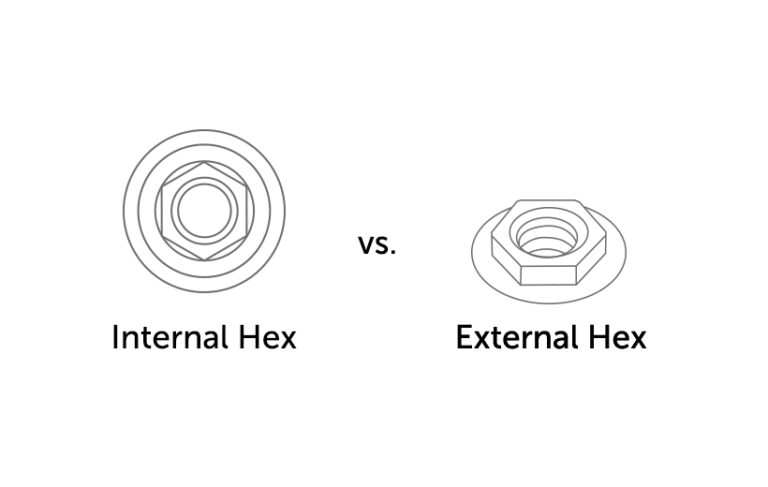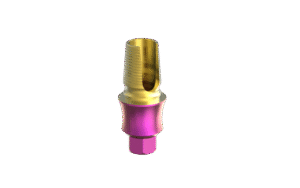When you’re considering dental implants with hexagonal implant connections, you’ll come across two options: internal and external. Both varieties have their benefits and drawbacks, and both can be beneficial in a number of different situations. To make the most informed decision for you, your practice, and your patients, you must research your options thoroughly. Here is a breakdown of the differences, strengths, and weaknesses of internal and external hexagon systems.
Internal Hexagon Systems
Internal hexagon implants, also called internal hex, are relatively new to the world of dentistry. They were originally created because external hexagon implants (external hex) made it difficult to place the abutments and screws. Today, many would argue that internal hex systems are the industry standard.
Internal hex systems make it easier to achieve closure since the cover cap is typically flush with the implant platform at the bone level. You won’t be left searching for screws or worrying about your patients swallowing the abutment. There’s reduced stress concentration in the crown, and the implant is more secure overall.
Studies have shown that internal implants are more stable when used in cases of single restoration. Further, additional studies revealed that internal hex systems gave more rotational freedom than their counterparts.
However, internal hex systems to have weaker heads than their external counterparts. There can also be a number of prosthetic esthetic issues. Additionally, since this system is newer and hasn’t been studied as much as its external counterpart, there is less literature on internal hexes. If you run into an issue, it may take significant time and effort to find the solution.
External Hexagon Systems
External hexagon systems were used for years before the internal hex came around, and many dentists still rely on this classic method. It got its beginnings with Brademark’s discover of dental implants, and his first implant was comprised of a 0.7 mm external hex with a butt joint.
You will achieve the best prosthetic combination with an external hex, and this system is more convenient when you’re making an impression. The system has undergone multiple transformations over the years, keeping it modern enough to still have applications in today’s dental practices.
It’s easy to find long-term follow-up data, and external hex systems work with multiple implant systems. A big advantage of these systems is their commonality. Since they’ve been used so extensively, you can easily find solutions to almost any complication you might encounter.
One disadvantage to the external hex system is the difficulty. It can be challenging to place the screw and the abutment, and you run the risk of losing a screw. You may also struggle to get the proper closure you need because of the greater height. There’s a higher chance of rotational misfit, the microbial seal is often inadequate, and the results are less esthetic when compared to internal hex systems.
While both internal and external hexagon systems have their place in dentistry, and many practices find success with either option, internal hex systems have become the standard in the past several years. Many dentists prefer this newer technology and find it easier and more reliable to work with. However, your decision for which implants to purchase for your practice will depend on a number of individual factors, so do your research to decide what works best for you.
Your One-Stop Shop for Dental Implants
No matter which hexagon system you prefer, you can rely on MSDI. Medical Systems & Devices International is proud to have more than 15 years of experience in the dental industry and has served satisfied customers from around the globe. We are your source for hexagon, conical, and slim implant systems, as well as bio materials, sutures, and digital imaging products. Contact us today to learn more!
References:
https://www.ncbi.nlm.nih.gov/pmc/articles/PMC4053613/
http://www.quintpub.com/journals/ijp/abstract.php?article_id=1725#.XzL7sS2ZOqA
https://pocketdentistry.com/4-different-implant-abutment-connections/
https://pocketdentistry.com/4-different-implant-abutment-connections/




